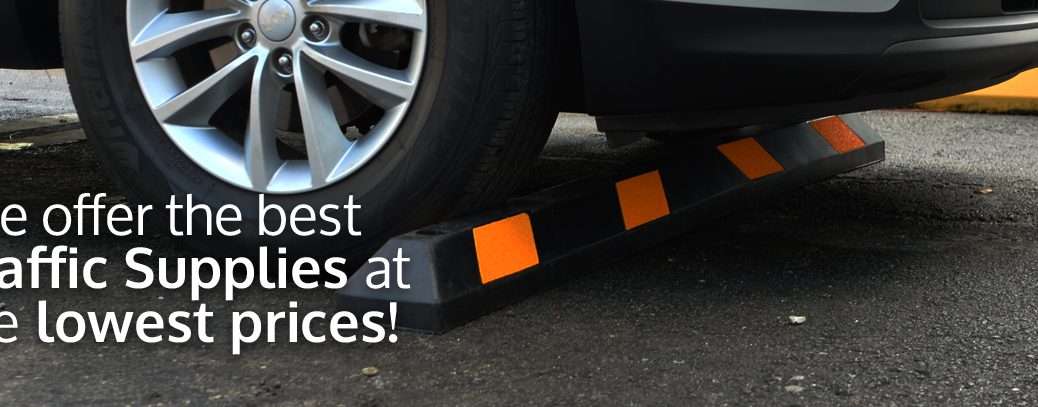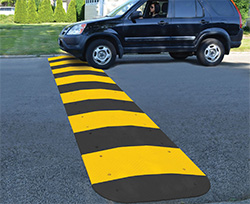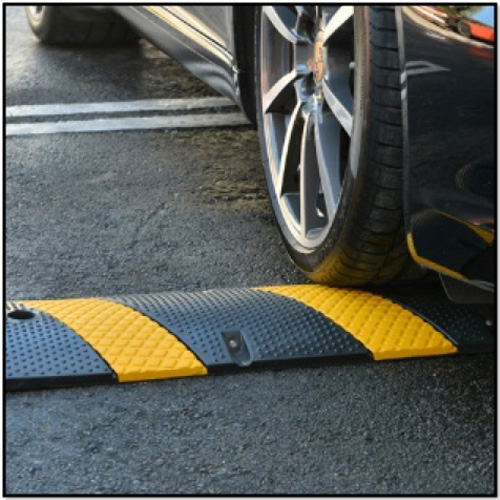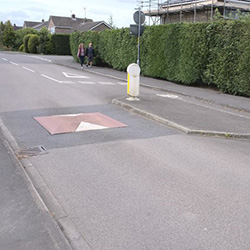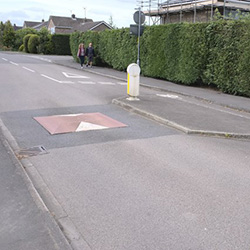Picture this: You’re cruising along your local street, and suddenly, you’re bouncing over a speed bump, or was it a speed hump? These traffic-taming titans are often mistaken for one another, yet they each play a unique role in the symphony of road safety. As conductors of the asphalt, it’s crucial to tune into the nuances that distinguish them. By the end of this harmonic exploration, we’ll have hit all the right notes to compare the effectiveness of speed bumps versus speed humps, shedding light on the common mix-up and providing a clear track for understanding their differences. So buckle up, as we embark on a journey to navigate the “humps and bumps” of traffic calming measures, and ultimately discern which of the two emerges as the maestro of moderation on our streets.

What are Speed Bumps and Speed Humps?
Imagine the rumble and the abrupt jolt – that’s the signature calling card of a
speed bump. These raised mounds of pavement are like the strict librarians of the road, shushing oncoming traffic to a whisper-quiet crawl. Their purpose? To dramatically reduce speed and bolster safety, especially in parking lots and residential areas. Speed bumps are often shorter in length but pack a punch with their height, making them hard to ignore even for the most lead-footed drivers.
Conversely,
speed humps are the gentle giants of the traffic world. They stretch wider across the road, like a speed bump that’s hit the gym and bulked up. Their gradual incline is designed to minimize disruption, allowing vehicles to glide over at reduced speeds without the herky-jerky stop-and-go. This makes them particularly suitable for larger thoroughfares where maintaining a steady but controlled flow of traffic is key.
While both speed bumps and humps share a common goal of pacing the pedal-pushers, their differences are crucial in determining their respective effectiveness in various environments.
Design and Installation Differences
When it comes to taming the wild steeds of the asphalt jungle, not all traffic calming devices are created equal. Enter the
design and
installation differences between speed bumps and speed humps. These differences aren’t just a matter of semantics; they’re the bread and butter of traffic management. Speed bumps, with their abrupt profile, are like the strict teachers of the road—demanding a significant slow down, they are often shorter in length but taller in height. Imagine a mini Mount Everest in the middle of the street, and you’ve got the picture. On the flip side, speed humps are the gentler cousins, with a broader, more gradual rise and fall that’s less likely to spill your morning coffee.
- Speed bumps are typically installed in low-traffic areas like parking lots or private roads.
- Speed humps, with their less aggressive approach, are more suited for residential streets where maintaining a smoother traffic flow is important.
The effectiveness of each design is inherently tied to their installation.
Criteria such as road width, traffic volume, and area type are crucial considerations that dictate whether a speed bump or a hump is the right choice for slowing down pedal-happy drivers.
Effectiveness in Reducing Speed
When it comes to putting the brakes on speeding vehicles, both speed bumps and speed humps throw their weight around, but in different arenas.
Speed bumps, notorious for their abrupt profile, are like the strict teachers of traffic school—demanding a near-complete halt from drivers, thus they are incredibly effective in slowing down traffic in high-pedestrian areas. On the other hand,
speed humps, with their more gentle undulation, are the cool substitutes—slowing things down without causing too much of a ruckus, making them better suited for residential roads where maintaining a steady flow is crucial.
- Speed Reduction: Speed bumps trump humps when it comes to slashing speed, known to reduce vehicle velocity to around 2-10 mph.
- Safety Concerns: However, the aggressive nature of speed bumps can sometimes lead to safety issues, such as loss of vehicle control or damage to the undercarriage, if not approached correctly.
Studies have backed up these observations, showing a clear distinction between the efficacy of these two measures in calming our speedy four-wheeled friends.
Impact on Traffic Flow
When it comes to orchestrating the dance of vehicles on our roads, speed bumps and speed humps play a pivotal but distinct role.
Speed bumps, with their abrupt elevation, tend to bring cars to a near-halt, creating the automotive equivalent of a pause in a symphony. This abrupt slowing can cause a ripple effect, resulting in a choppy, staccato rhythm in traffic flow. It’s a necessary pause for safety, but one that can be jarring for the tempo of travel.
In contrast,
speed humps are the gentler cousins, stretching across the road like a long sigh. They encourage a more moderate deceleration, allowing traffic to maintain a smoother, more allegro pace. However, it’s not all smooth sailing; the broader design can still present disruptions, particularly for
emergency vehicles,
public transportation, and the two-wheeled ballet of
cyclists. The tempo slows, yet the movement continues, more adagio than allegro, but fluid nonetheless.
- Emergency vehicles may find speed humps less disruptive than speed bumps, yet any form of traffic calming can add precious seconds to response times.
- Public transportation, such as buses, navigate more comfortably over humps than bumps, preserving the tempo for passengers.
- For cyclists, a hump might be a mere ripple in the road, whereas a bump could be a full stop in their urban melody.
Choosing the right traffic calming measure is akin to selecting the right instrument for a musical piece—the choice can harmonize with the environment or cause an unintended cacophony.
Maintenance and Cost Comparison
When it comes to deciding whether to install speed bumps or speed humps, a critical aspect to consider is the maintenance and cost associated with each. Let’s dive into the financial pool of these traffic-calming measures and see which one might require a bigger budget lifejacket!
- Maintenance: Speed bumps, due to their more aggressive design and the higher impact they absorb from vehicles, may need more frequent repair. On the flip side, speed humps, with their gentle slopes, tend to wear the cloak of durability a bit better, requiring less maintenance over time.
- Installation Costs: Both speed bumps and humps come with different price tags. Speed bumps often cost less upfront because of their smaller size, making them the go-to option for budget-conscious communities. However, speed humps, though potentially more costly initially, could prove to be the economic tortoise winning the race, thanks to their lower maintenance needs.
- Long-term Costs: Considering the longevity of the installation, speed humps may end up being more cost-efficient, as the frequency of repairs is lower, leading to reduced long-term expenses. Conversely, the potentially higher maintenance frequency for speed bumps might see costs accumulate faster than dust on a neglected bookshelf.
Ultimately, both have their pros and cons when it comes to maintenance and cost. The choice between these two options should be driven by a careful analysis of immediate and future financial implications, the expected traffic volume, and the specific needs of the area. This will ensure the selected traffic-calming measure won’t speed bump your budget or cause financial humps down the road.
Considerations for Choosing Between Speed Bumps and Speed Humps
When the rubber meets the road – quite literally – in the decision between
speed bumps and
speed humps, there are several key factors to consider. As we’ve navigated the twists and turns of their differences, it’s clear that both serve the noble purpose of reigning in those lead-footed drivers. But when it comes down to the wire, choosing the most suitable option for your stretch of asphalt isn’t a one-size-fits-all affair.
- Location, Location, Location: Consider the environment. Is this a high-pedestrian area like a school zone where the abrupt nudge of a speed bump is necessary? Or is it a residential street where a gentler, elongated hump will maintain a smooth but controlled flow?
- Type of Traffic: Think about who’s rolling over these traffic taming tools. Are emergency vehicles often barreling down this boulevard, potentially needing a less disruptive hump? Or will lower, slower traffic like public transportation and cyclists be navigating this obstacle course?
- Speed Limit Goals: Envision the desired pace of vehicles. Speed bumps are the tortoises of the traffic world, enforcing a slow crawl, while speed humps are the hares, allowing for a quicker yet restrained race.
Considering these elements can steer you toward the most
effective traffic calming solution for your specific scenario, ensuring a balance between safety, flow, and community needs.
Conclusion
As we’ve journeyed through the riveting world of traffic-calming titans—the speed bump and the speed hump—we’ve unraveled their mysteries and quelled the confusion that often clouds their identities.
Understanding the nuances between these two guardians of pedestrian safety is more than an exercise in semantics; it’s a critical step in forging safer streets and neighborhoods.
But our quest doesn’t end at comprehension. The true challenge lies in choosing the champion for our concrete jungles. When deciding between speed bumps and humps, consider the
longevity, effectiveness, and impact on the daily dance of vehicles and people. The key is to weigh the unique needs of each roadway against the characteristics of these traffic-calming contenders.
So, let us not simply be bystanders in the battle against brash driving. Instead, let’s continue to
drive our curiosity and delve deeper into the studies and strategies that shape our transit tapestries. After all, whether it’s the abrupt admonishment of a speed bump or the gentle persuasion of a speed hump, the goal is a shared one: safety and harmony on the highways and byways of life.
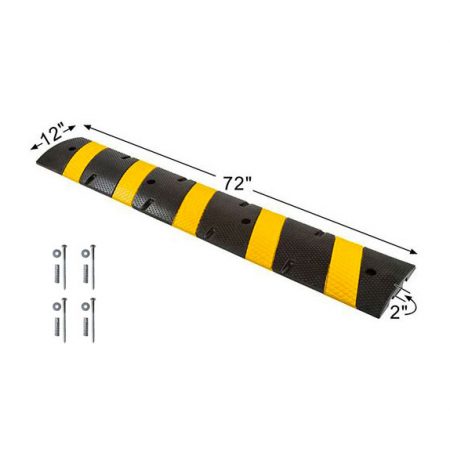 Speed humps and speed bumps, although similar, serve slightly different purposes and are beneficial in distinct scenarios. Essentially, these are physical traffic calming devices that force drivers to reduce their speed while crossing them. They are strategically placed to ensure safety, improve the flow of traffic, and protect pedestrians in areas with high foot traffic. The primary difference between the two lies in their design and the degree of speed reduction they cause. Speed humps are broad, gradual elevations in the roadway, while speed bumps are narrower and more abrupt.
Speed humps and speed bumps, although similar, serve slightly different purposes and are beneficial in distinct scenarios. Essentially, these are physical traffic calming devices that force drivers to reduce their speed while crossing them. They are strategically placed to ensure safety, improve the flow of traffic, and protect pedestrians in areas with high foot traffic. The primary difference between the two lies in their design and the degree of speed reduction they cause. Speed humps are broad, gradual elevations in the roadway, while speed bumps are narrower and more abrupt.
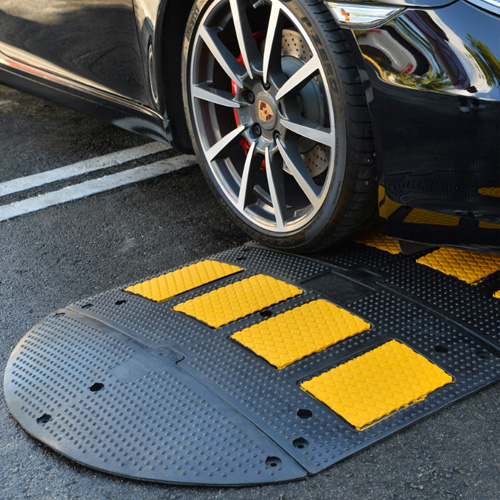 The deployment of these traffic control measures has a host of advantages and purposes. They are designed to slow down traffic particularly in residential areas, around schools, and in other pedestrian-rich zones. By encouraging drivers to navigate at reduced speeds, they significantly minimize the risk of accidents. Moreover, they play an instrumental role in facilitating a safe environment for pedestrians and cyclists.
Moreover, speed humps and bumps provide a cost-effective and practical solution compared to other physical traffic calming measures like roundabouts or one-way streets. They are less planning intensive and can be installed easily and inexpensively on a variety of existing surfaces. This makes them a preferred choice for local authorities and private areas looking for immediate and effective traffic calming solutions.
Speed humps, being larger and more gradual, are particularly useful in places where traffic needs to flow smoothly, but at a controlled pace. Meanwhile, their smaller counterparts, speed bumps, are more suitable for areas where pedestrians and vehicular traffic share space more equally. Both types, when used appropriately, can become traffic safety superstars in their own right, creating safer environments for both drivers and pedestrians.
In the following sections, we will delve deeper into the various advantages of speed humps and speed bumps, their installation considerations, and maintenance requirements. We aim to highlight their effectiveness in promoting safe driving in pedestrian zones and encouraging drivers to adhere to speed limits, thereby ensuring the safety of everyone on the road.
The deployment of these traffic control measures has a host of advantages and purposes. They are designed to slow down traffic particularly in residential areas, around schools, and in other pedestrian-rich zones. By encouraging drivers to navigate at reduced speeds, they significantly minimize the risk of accidents. Moreover, they play an instrumental role in facilitating a safe environment for pedestrians and cyclists.
Moreover, speed humps and bumps provide a cost-effective and practical solution compared to other physical traffic calming measures like roundabouts or one-way streets. They are less planning intensive and can be installed easily and inexpensively on a variety of existing surfaces. This makes them a preferred choice for local authorities and private areas looking for immediate and effective traffic calming solutions.
Speed humps, being larger and more gradual, are particularly useful in places where traffic needs to flow smoothly, but at a controlled pace. Meanwhile, their smaller counterparts, speed bumps, are more suitable for areas where pedestrians and vehicular traffic share space more equally. Both types, when used appropriately, can become traffic safety superstars in their own right, creating safer environments for both drivers and pedestrians.
In the following sections, we will delve deeper into the various advantages of speed humps and speed bumps, their installation considerations, and maintenance requirements. We aim to highlight their effectiveness in promoting safe driving in pedestrian zones and encouraging drivers to adhere to speed limits, thereby ensuring the safety of everyone on the road.

